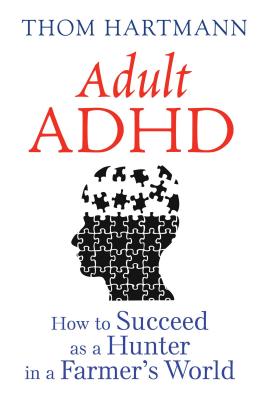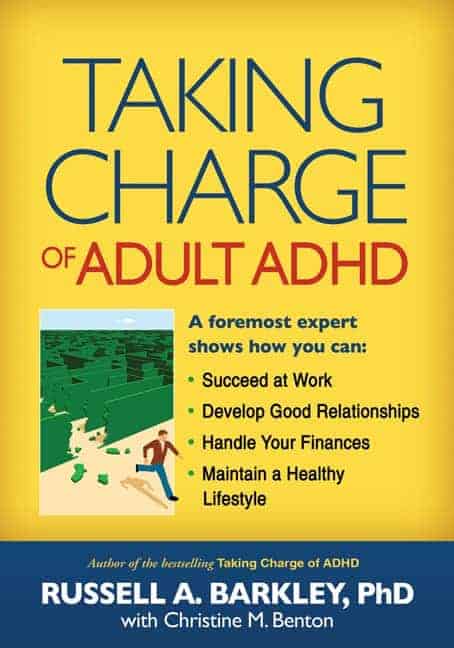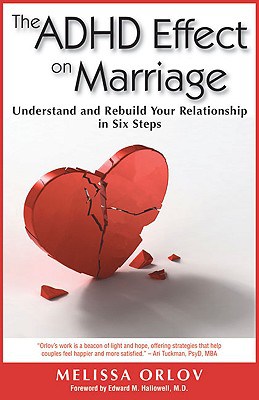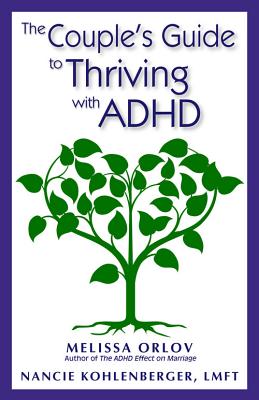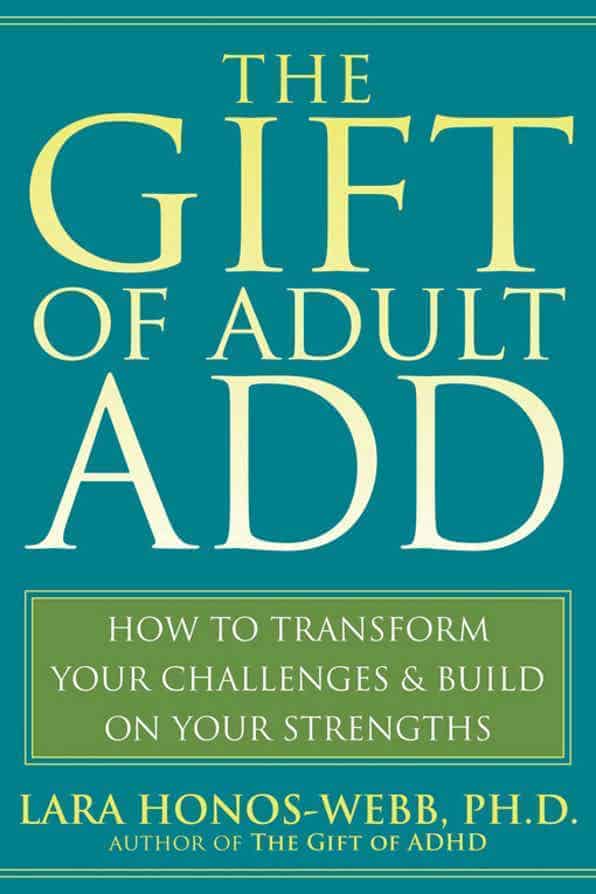ADHD
ADHD in Adults
Gia Miller August 13, 2021

Contents
- Overview
- What Is ADHD?
- What Is ADHD in Adults?
- Symptoms of ADHD in Adults
- Causes and Risk Factors for ADHD
- How Is ADHD Diagnosed?
- Treatments for Adult ADHD
What Is ADHD?
Attention-deficit/hyperactivity disorder (ADHD) is a neurodevelopmental condition that affects about 5% of children and 2.5% of adults worldwide.1 According to the American Psychiatric Association’s Diagnostic and Statistical Manual of Mental Disorders (5th edition; DSM-5), ADHD consists of a long-standing pattern of inattention and/or hyperactivity-impulsivity that interferes with daily life or healthy development.1,2
ADHD is a chronic condition that can affect people as young as 3 years old. It is considered one of the most common neurodevelopmental disorders of childhood and continues through adulthood for most people.3 Among children and adolescents, ADHD is currently the third most common mental health disorder globally.4 Generally, boys are diagnosed with ADHD more often than girls, but diagnostic rates do not necessarily reflect real-world prevalence; studies have shown that ADHD is often unidentified in girls because the symptoms are not as externally evident.2,5 A large proportion of women with ADHD are not diagnosed until adulthood despite symptoms being present in childhood. In general, the symptoms of ADHD in adults often appear different from those in children and teens because adults may have been taught coping strategies or may have developed their own. Late diagnosis and treatment can increase the number of struggles individuals face as adults.2,6
What Is ADHD in Adults?
Although many people associate ADHD with children, some studies suggest that about 65%–80% of children with ADHD continue to experience symptoms as adults.7 In the United States, more than 4% of adults are diagnosed with ADHD.8 However, researchers believe that at least 75% of adults who have ADHD are unaware that they have it.9
The presentation of ADHD in adults differs from that in children, yet current diagnostic criteria often ignore this fact; instead, the criteria focus on symptoms that are almost identical to those of childhood ADHD.10
When adults do not understand or are unaware of their ADHD, they can experience a variety of problems at home, at work, and with their friends and family, including:11
- mood disorders
- frequent unemployment
- loss of self-esteem
- substance use disorders
- trouble with personal relationships
What Are the Symptoms of ADHD in Adults?
According to the DSM-5, symptoms of ADHD fall into two main categories: inattention and hyperactivity-impulsivity. Children need to display a minimum of six symptoms in order to be diagnosed with ADHD, while adults need only to display five.1 Some scholars have suggested that the DSM-5 should include emotional impulsivity as one of the main symptoms because it contributes to additional struggles not included in the other categories.12 Another feature not listed as a diagnostic criterion in the DSM-5 but common in individuals with ADHD is a deficiency in social skills.2
Inattention
Inattention refers to a wandering mind and difficulty remaining focused for long periods. Inattention can cause people to lose focus on tasks they attempt to complete or on people with whom they are speaking. Many people who experience inattention are disorganized and lack the persistence to follow through on assignments or projects. People who are unfamiliar with ADHD may interpret these symptoms as defiance or a lack of understanding.2,13
Hyperactivity
Individuals with hyperactivity often constantly move around, even when it is unnecessary and/or inappropriate to do so. For example, they may fidget, tap, or talk when trying to remain still. Among adults, hyperactivity can present as extreme restlessness.2,13
Impulsivity
Individuals with impulsivity seek instant gratification and often act before they think. They may also say or do things they should not or make important decisions without considering the consequences. They may appear to lack social skills and may repeatedly interrupt others.2,13
Emotional Impulsivity
Emotional impulsivity is defined by Russell A. Barkley, a professor, clinician, and renowned ADHD researcher, in his 2015 book Attention-Deficit Hyperactivity Disorder: A Handbook for Diagnosis and Treatment as “a deficiency in both the effortful (executive or cognitive) inhibition and the top-down self-control of emotions in general and particularly those pertaining to the self-regulation of frustration, impatience, and anger.”14 Although it is not included as a symptom in the DSM-5, Barkley has argued that emotional impulsivity is a defining feature of ADHD. He has also suggested that this symptom may be essential to better understanding the emotional and social struggles common in the lives of people with ADHD.2,14
Social Skills Deficits
Both children and adults with ADHD may have more limited social skills than people without an ADHD diagnosis. Research suggests that this scenario is caused by their difficulty paying attention to others, following instructions, regulating their emotions, and having conversations.15 While many children with ADHD participate in social skills groups to learn the rules surrounding social interaction, recent research indicates that it is not a child’s lack of knowledge about social skills that causes their struggles; instead, it is their inability to use those skills regularly that contributes to social difficulties.2,15
Some adults with ADHD also may struggle with social skills, mainly because it can be difficult to pay attention while their friends are talking and simultaneously regulate their emotions.16 They may experience social rejection and tend to have a greater turnover of friendships. They can also struggle with romantic relationships and, it seems, are more likely to have marital conflicts and divorce.16 Adults with ADHD often develop strategies, such as being punctual and only socializing with large groups, that may mask their difficulty with social skills.17
Changes in ADHD Symptoms in Adults
Although symptoms related to ADHD can appear to change over time, research in the past decade has indicated that an individual’s core symptoms may not change as much as previously thought. For example, scientists have long suggested that hyperactive-impulsive symptoms decrease as individuals age. However, more recent research reveals that hyperactivity in children instead likely transitions from external behavior (e.g., constantly moving around) to internal sensations (e.g., always feeling excitable, restless, or activated) as people grow older.18,19 Additionally, in situations where a family member or colleague intervenes and handles some or many of the functions that present difficulty for a person with ADHD, the latter may then appear to outsiders to be more functional and to have fewer symptoms than before—whether the symptoms have decreased or not.2
In their book Taking Charge of Adult ADHD, Russell Barkley and Christine Benton describe some of the additional symptoms of adult ADHD as follows:20
- problems with managing time
- difficulty motivating oneself
- inability to think clearly
- poor functioning at work
- frequently changing jobs
- difficulty managing finances
- feeling as though one must always be busy doing lots of things, but not finishing most of them
- struggling to get to the point of what a person is trying to say
- finding oneself forgetting things that need to get done but are not urgent
- engaging in risky sexual behavior
- driving unsafely
- problems in dating or marital relationships
Adult ADHD in the Workplace
Adults with ADHD tend to change jobs more often than others.7 The reasons are varied; some people may find it challenging to manage workplace responsibilities. Others may quickly become bored with their job or may frequently experience interpersonal problems in the workplace. According to a fact sheet developed by Barkley, they may also be underemployed relative to their intelligence and education.7
Causes and Risk Factors for ADHD
Although researchers have not identified a single or definitive cause of ADHD, one significant risk factor is genetics. If a parent or sibling has ADHD, other people in the family are at a higher risk for receiving an ADHD diagnosis.21 Other possible causal factors include cigarette smoking and alcohol use during pregnancy, low birth weight, and traumatic brain injury.2,21
A link between ADHD and certain environmental toxins may also exist. In the past few decades, the number of children with ADHD has dramatically increased. Although this may simply indicate a reduction in stigma around ADHD, or greater familiarity with ADHD as a diagnostic category, it may also point to other factors. As a result, researchers have begun studying the possible link between ADHD and early and excessive exposure to different kinds of environmental toxins, such as lead, mercury, polychlorinated biphenyls (PCBs), and polyvinyl chloride (PVC).2,16
Co-occurring Disorders
Adults with ADHD often have other conditions, called co-occurring disorders, as well. For some, the symptoms of the co-occurring disorder are masked by their more obvious ADHD symptoms. For others, ADHD can be concealed by symptoms of another disorder.
Statistics on co-occurring disorders in adults with ADHD suggest:22
- Approximately 47% of individuals also experience an anxiety disorder.
- Approximately 38% of individuals also experience a mood disorder.
- Approximately 38% of individuals also experience a substance use disorder.
- Approximately 20% of individuals also experience an impulse control disorder.
How Is ADHD Diagnosed?
ADHD can be diagnosed by medical doctors (e.g., pediatricians, psychiatrists, and neurologists) and mental health professionals (e.g., psychologists and neuropsychologists). Because people with ADHD may have co-occurring conditions, and many ADHD symptoms overlap with those of other conditions, each possible case should be evaluated by a professional who understands and has experience diagnosing ADHD.2
Before being diagnosed with ADHD, a physician or mental health practitioner should rule out other conditions that might mimic symptoms of ADHD. These conditions include the following:1,2
- anxiety disorders
- autism spectrum disorder
- conduct disorder
- developmental coordination disorder
- intellectual disability
- language disorder
- learning disorder
- mood disorders
- oppositional defiant disorder
- sleep disorders
- tic disorders
An ADHD diagnosis requires a combination of a medical or psychological evaluation and assessments from parents, teachers, or other adults who regularly interact with the person. Although ADHD is most often diagnosed in school-aged children, adults can also be diagnosed with ADHD. Because there has been little research on social challenges for adults with ADHD, people typically turn to the research and recommendations provided for children when looking for answers.23
When evaluating an adult for ADHD, a medical or mental health professional will often ask questions about the individual’s childhood because the DSM-5’s ADHD criteria include the requirement that “several inattentive or hyperactive-impulsive symptoms were present prior to age 12 years.”1 They may also speak with the individual’s spouse, close friends, and colleagues. Some professionals will also administer neuropsychological tests that evaluate domains such as working memory, executive functioning, and visual-spatial reasoning.2,24
To meet the criteria for a diagnosis of ADHD, an adult must demonstrate five or more symptoms (compared to at least six in children) of inattention and/or hyperactivity-impulsivity. The symptoms must have been present for at least 6 months, must occur in at least two settings (e.g., home and work), and must significantly interfere with an individual’s social, academic, or work performance.1
If the individual meets these criteria, they will receive a diagnosis of one of the following:
- ADHD, predominantly inattentive presentation
- ADHD, predominantly hyperactive-impulsive presentation
- ADHD, combined presentation
As previously mentioned, some ADHD experts believe the diagnostic criteria in the DSM-5 do not accurately capture the symptoms of adult ADHD and have proposed a variety of solutions to this problem, such as changing the terminology, expanding the existing definition, removing the age-of-onset requirement, and differentiating symptoms by gender.13
Treatments for Adult ADHD
ADHD treatments for adults may include psychosocial treatment, medication, and lifestyle changes. Professionals often recommend that treatments are combined for the best outcomes.2
Psychotherapy and Psychosocial Treatments
Psychosocial treatments combine psychotherapy and social training. Examples include the following:2,13,25,26
Cognitive Behavior Therapy.
Cognitive behavioral therapy (CBT) is an evidence-based form of talk therapy anchored in altering negative cognitive processes and behavioral patterns. CBT is a short-term, goal-oriented therapy administered by a psychotherapist, either face-to-face or via teletherapy such as online sessions.27 It can assist individuals with ADHD in working through negative self-talk to feel more confident about themselves and their abilities. This form of therapy can also help individuals become aware of their thoughts and how some forms of thinking can lead to troublesome behaviors.2,13
CBT can also include teaching a person a variety of coping skills, including relaxation and mindfulness techniques, that they can use during their daily life to help them more effectively cope with their thoughts and feelings.2,13
Family and Couples Therapy.
Adults with ADHD often struggle with executive functioning skills, like time management, organization, and planning, in addition to self-esteem and relationship issues.6 These difficulties can unintentionally strain a partner if they feel tasked with the “heavy lifting” in the relationship. Couples therapy may help both partners learn how to better communicate and support each other in the context of an ADHD diagnosis.
Psychoeducation.
Because adults with ADHD tend to feel isolated in relation to their perceived differences and their difficulty connecting socially, psychoeducation is an important part of therapy. ADHD is still widely considered a childhood disorder by many; psychoeducation helps adult clients with ADHD to understand that their problems have a tangible cause that, once diagnosed, can be helped. The psychoeducational component can also be extended to family members and close friends so that they too can understand the capabilities and difficulties of those with ADHD.28
Group Therapy.
Due to a tendency to feel socially isolated and misunderstood by peers, adults with ADHD often benefit from group therapy, which can provide much-needed social support. This therapy format allows people to connect with others who have the same condition and may experience many of the same symptoms and inhibitions. People with ADHD may find it challenging to commit to structured weekly sessions, but some experts suggest that semi-sporadic, one-day workshops might be a better fit.28
Medication
ADHD medications are designed to help adults manage their symptoms during everyday life. Medications can reduce hyperactivity-impulsivity and improve an individual’s ability to focus, work, and learn.2,13,29
The Food and Drug Administration (FDA) has approved several different types of medications to treat ADHD. They each fall into one of two categories:2,13,26,29
Stimulants.
Stimulants reduce symptoms in most individuals with ADHD and are the most common type of medication used to treat the disorder. They are designed to stimulate two neurotransmitters (norepinephrine and dopamine), which are often deficient among people with ADHD. Medications are taken daily and begin to work soon after they are taken, but they wear off by the end of the day. Stimulant medication comes in two forms:
- Instant release: The entire dose is released upon taking it.
- Extended release: The dose is steadily released over the course of several hours.
Nonstimulants.
For individuals who cannot take stimulants or for whom they have been ineffective, two medications that were initially designed to treat high blood pressure, clonidine and guanfacine, can be used. They activate receptors in the brain that react to neurotransmitters. These medications do not work as quickly as stimulants, but their effects can last up to 24 hours.
Medications for ADHD can have side effects, and it may take time to find the proper medication and dosage. Often, individuals try more than one type of medication or dose before finding what works best for them. When starting ADHD medication, people work closely with their doctor; they check in frequently to discuss how they feel, whether they have side effects, and if they believe their dose is effective.2,13,26,29
A combined approach (i.e., medication plus therapy and psychosocial treatments) can yield even greater benefits for a person with ADHD.24
Lifestyle Modifications
In addition to standard ADHD treatments, research has shown that living a healthy lifestyle can alleviate ADHD symptoms.30 Components of a healthy lifestyle for a person with ADHD include the following:2,31
Exercising.
For some people, exercise can increase their ability to pay attention. It can also decrease hyperactivity.
Getting Enough Sleep.
For many individuals, children and adults included, the amount and quality of sleep can affect the severity of ADHD symptoms.
Spending time outdoors.
Research has shown that nature can improve people’s mood and concentration, whether experienced through gardening, visiting a park, or taking a hike.
Practicing yoga or another form of mindfulness.
These activities can increase some people’s ability to pay attention and be present in the moment.
Eating healthy foods, including foods that are high in protein.
Protein can provide a steady energy source because it is slow to metabolize in the body. If a person with ADHD is low on energy, they may be more impulsive and have more difficulty concentrating.32







